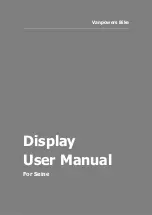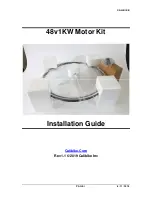
18
Check for Traffic: Always Be Aware of the Traffic Around You -
Over 70 percent of car-bicycle
crashes occur at driveways or other intersections. Before you enter any street or intersection, check for
traffic. Always look left-right-left, and walk your bicycle into the street to begin your ride. If you are
already in the street, always look behind you for a break-in traffic, then signal before going left or right.
Watch for left or right turning traffic.
Learn Rules of The Road: Obey Traffic Laws -
Bicycles are considered vehicles. Bicyclists must
obey the same rules as motorists. Read your State drivers handbook, and learn and follow all the traffic
signs, laws, and rules for operating a vehicle on the road. Always signal your moves. Be courteous to
pedestrians and other vehicle operators.
Never wear headphones
while riding as they impair your
ability to hear traffic. Become familiar with the accommodations that are available for bicyclists in your
area. These include bicycle lanes and routes as well as off-road paths. Take advantage of these
whenever possible.
“Drive” with Care: Share the Road -
When you ride, consider yourself the driver of a vehicle and
always keep safety in mind. Choose to ride in the bike lane, if available. If the roadway or bike lane is
wide, ride to the right; if the lane is narrow, you may choose to ride in the middle of the lane. Take extra
precautions when riding on a roadway. Bicycles are smaller than automobiles, and don’t protect the
operator like an automobile. You should: Make eye contact, smile, or wave to communicate with
motorists. Courtesy and predictability are a key to safe cycling; Be considerate and aware of motorists
and pedestrians. Learn to anticipate their actions. Remember, pedestrians have the right of way; Ride
far enough away from the curb to avoid the unexpected from parked cars (i.e. opening doors or drivers
pulling out without checking); Keep control of your bicycle: look behind you while maintaining your
bicycle in a straight path; be able to ride with one hand on the handlebars and signal a turn. (Practice
these skills in a parking lot); Always look over your shoulder, and if possible, signal before changing
lanes; Make sure that books, clothes, and other items are securely attached to the bicycle or carried in
a backpack; and Use bells, horns, or your voice to alert pedestrians and bicyclists that you are
approaching or passing.
Stay Focused: Stay Alert -
Never wear headphones; they hinder your ability to hear traffic. Always
look for obstacles in your path (potholes, cracks, expansion joints, railroad tracks, wet leaves, drainage
grates, or anything that could make you fall). Before going around any object, scan ahead and behind
you for a gap in traffic, signal your intentions to move, and then follow through with your intentions. Be
aware of the traffic around you. Ride defensively. Use extra care when riding in wet weather, ice, frost,
or snow. Slow your speed and allow extra time and space to stop. Use extra care when crossing
bridges which are extra slippery under wet conditions. Use caution when crossing a railroad track;
cross tracks at a 90-degree angle and proceed slowly.
c.
Wet weather riding
You should avoid whenever possible to ride your bicycle in the rain. Riding a bicycle in the rain is like driving a car
in the snow. You will not be able to stop as fast and must leave a larger distance between you and the obstacles
around you. Your brakes will not perform as quick when they are wet. You will not be able to turn as sharp without
the danger of slipping. You must also ride away from or be cautious around painted lines, pot holes, sewer or drain
grates, rail road crossings, bridges, wet leaves and any other area where a slippery surface can appear with water.
Keep an eye out for puddles and turn your lights on if you have them. If you live in an environment where rain riding
is expected, you should install front and rear fenders if you have not already done so. Use a cover for your bicycle if
leaving it outdoors. Extensive rain can seep into the controller and battery and cause water damage.
d.
Reflectors
The
CPSC (US Consumer Product Safety Commission) requires front, rear, wheel and pedal reflectors. Your G
Plus Mariner 7 includes federal regulated reflectors and they should not be removed. If needing to be replaced,
replace them with authorized Prodeco reflectors or reflectors approved by the CPSC.
e.
Night riding
Almost anywhere in the world today, bicycle night riding requires front and rear lights on your bicycle. You must
install front and rear lights if you plan on riding at night. Check your local laws on what is required for night riding.
Always wear retro-reflective clothing or material, not just white or florescent, especially on your ankles, wrists, back,
and helmet. Only ride in areas familiar to you. Brightly lit streets are best. Always assume you are not seen by a
driver. Children should NOT ride at night.
f.
Adding accessories
When adding accessories to your bicycle you must check to confirm they do not lower the safety value of your
bicycle. Prodeco Technologies offers authorized accessories for your bicycle which have been approved not to
lower the safety value. Ask your authorized dealer or contact us if you are not sure about adding an accessory to
your bicycle and the possibility of lowering your bicycle’s overall safety.
Содержание G Plus Mariner 7
Страница 7: ...7...
















































